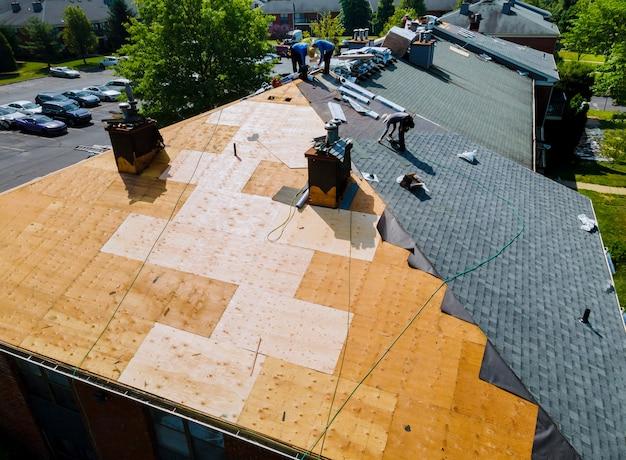
The truth is, no roof is built to last forever. The Asphalt Roofing Manufacturers Association states that an asphalt shingle roof typically lasts about 15-20 years. When your roof approaches this age or starts to deteriorate, the idea of replacing it can seem overwhelming. You might wonder what the replacement process involves and how much time it will take. This guide will outline the steps involved in a roof replacement, making this significant home upgrade less intimidating.
Signs You Might Need a Roof Replacement:
- Missing or damaged shingles
- Curled or warped shingles
- Visible leaks or water stains in your attic or ceiling
- Granules accumulating in your gutters
- Sagging or uneven roofline
Step 1: Choosing a Reputable Roofing Contractor
This is arguably the most crucial step. Look for a licensed and insured Sugar Land roofing company with a proven track record of quality work. R. Cooper Roofing & Siding is a Sugar Land company known for its reliability. Of course, there are other companies available, and it's wise to do your research to find the best fit for your needs. Make sure to read online reviews, and get quotes before making your final decision.
Step 2: Project Planning and Permitting
Once you've chosen your contractor, they will conduct a thorough inspection of your roof and discuss your options for materials and styles. They will also handle the permitting process with your local Sugar Land authorities. This ensures the project adheres to building codes and safety regulations.
Step 3: Preparing Your Home for the Project
The contractor will provide you with specific instructions on how to prepare your home for the roof replacement. This might involve moving patio furniture, removing fragile items from your attic, and covering any landscaping or plants near the house.
Step 4: The Roof Replacement Process
Here's a general overview of the typical roof replacement process:
- Removal of the Old Roof: The existing shingles and underlayment will be carefully removed. Depending on the condition of the roof decking (the wooden boards beneath the shingles), it might also need repairs or replacement.
- Inspection and Repairs: The roof decking will be thoroughly inspected, and any necessary repairs will be made. This might involve replacing rotten boards or addressing any moisture damage.
- New Underlayment Installation: A new layer of underlayment, a water-resistant barrier, will be installed over the roof decking. This layer helps protect your home from leaks and moisture infiltration.
- Shingle Installation: The new shingles will be installed according to the manufacturer's specifications. There are various shingle materials and styles to choose from, affecting the project's overall cost and aesthetics.
- Flashing and Ventilation Installation: Metal flashing will be installed around chimneys, vents, and other roof penetrations to prevent leaks. Roof vents will also be replaced or installed to ensure proper ventilation in your attic space.
- Cleanup and Inspection: Once the roof replacement is complete, the contractor will meticulously clean up the debris and dispose of it properly. A final inspection will be conducted to ensure everything is installed correctly and to your satisfaction.
The Timeline: How Long Does it Take?
The duration of a roof replacement project depends on several factors, including the size and complexity of your roof, the chosen materials, and weather conditions. A typical roof replacement on a single-story home might take 1-3 days, while a larger or more complex roof could take longer. Your chosen contractor will provide a more accurate estimate based on your specific project.
What to Expect During the Project?
There will likely be some noise and disruption during the roof replacement process. Be prepared for limited access to your attic space while the work is ongoing. It's also a good idea to park your car away from the house to avoid any accidental damage. Discuss any concerns you have with your contractor beforehand, and they will be happy to answer your questions and accommodate your needs whenever possible.
Taking Care of Your New Roof
Regular maintenance is key to ensuring it lasts for years to come. Schedule annual inspections with a qualified roofer to identify any minor issues early on. Keep your gutters clean and free of debris to prevent water pooling around your roof. Trimming any overhanging branches can also help minimize potential damage from wind and falling debris.
A roof replacement project is an investment in your home's protection and value. Selecting the right contractor, being prepared, and knowing what the project entails are key to a hassle-free roof replacement. Once it's done, you'll have the assurance that your home is well-protected, giving you comfort and security for many years.
